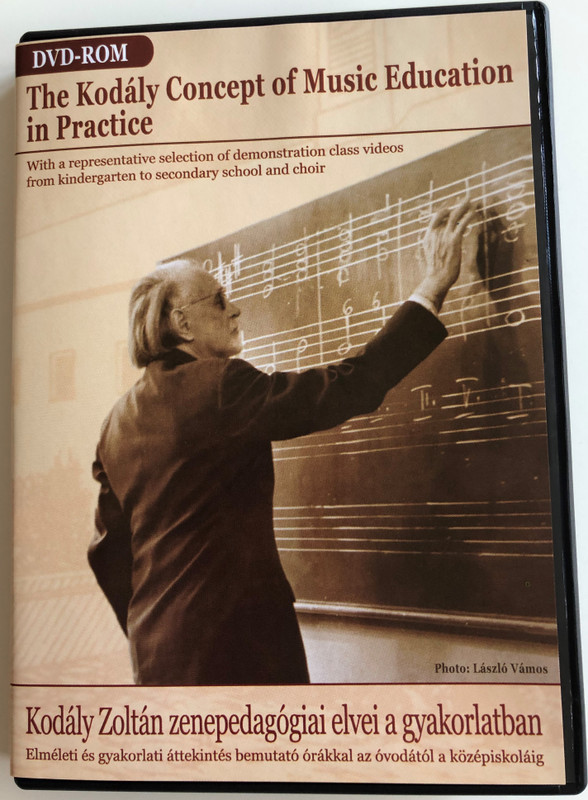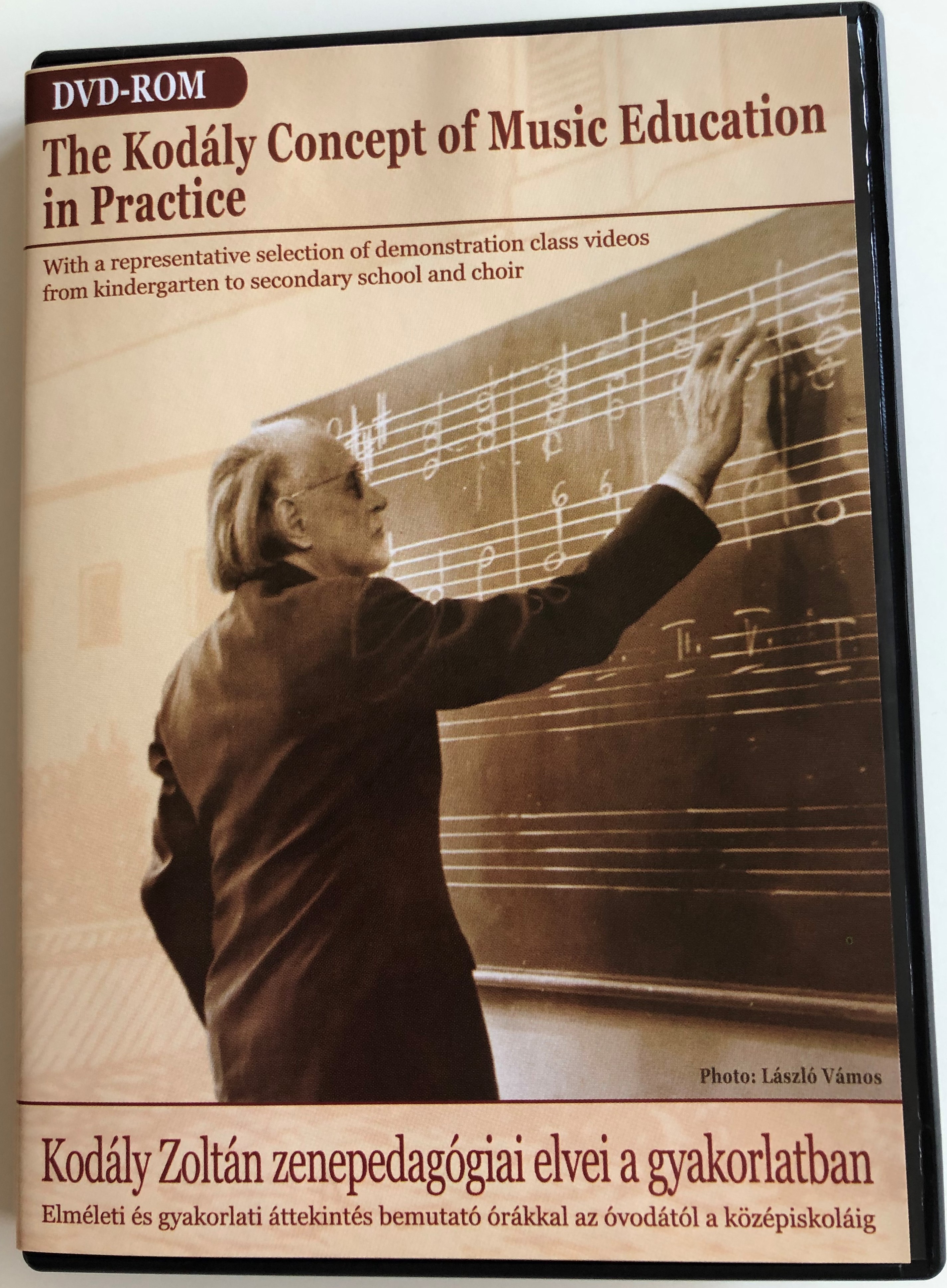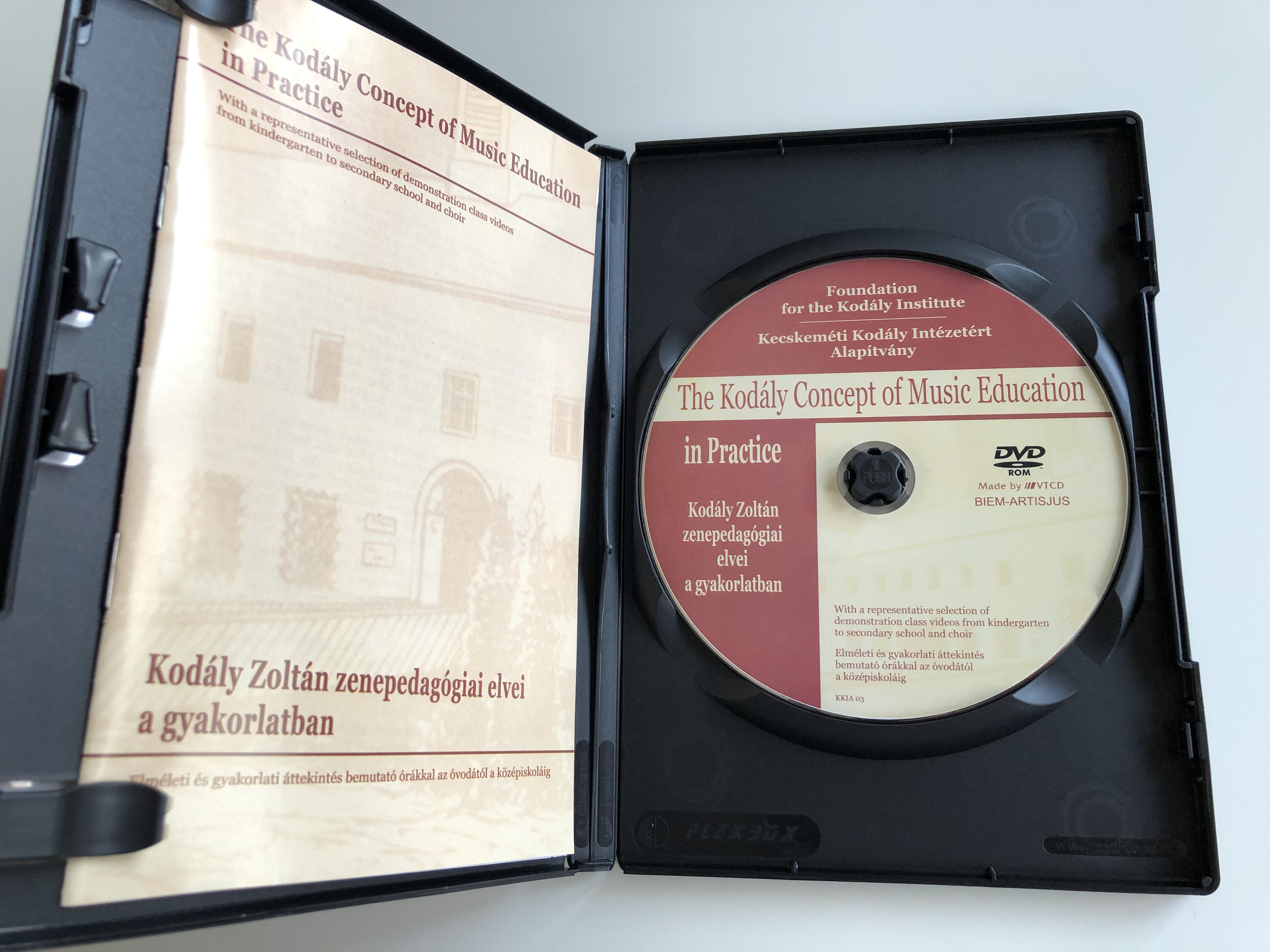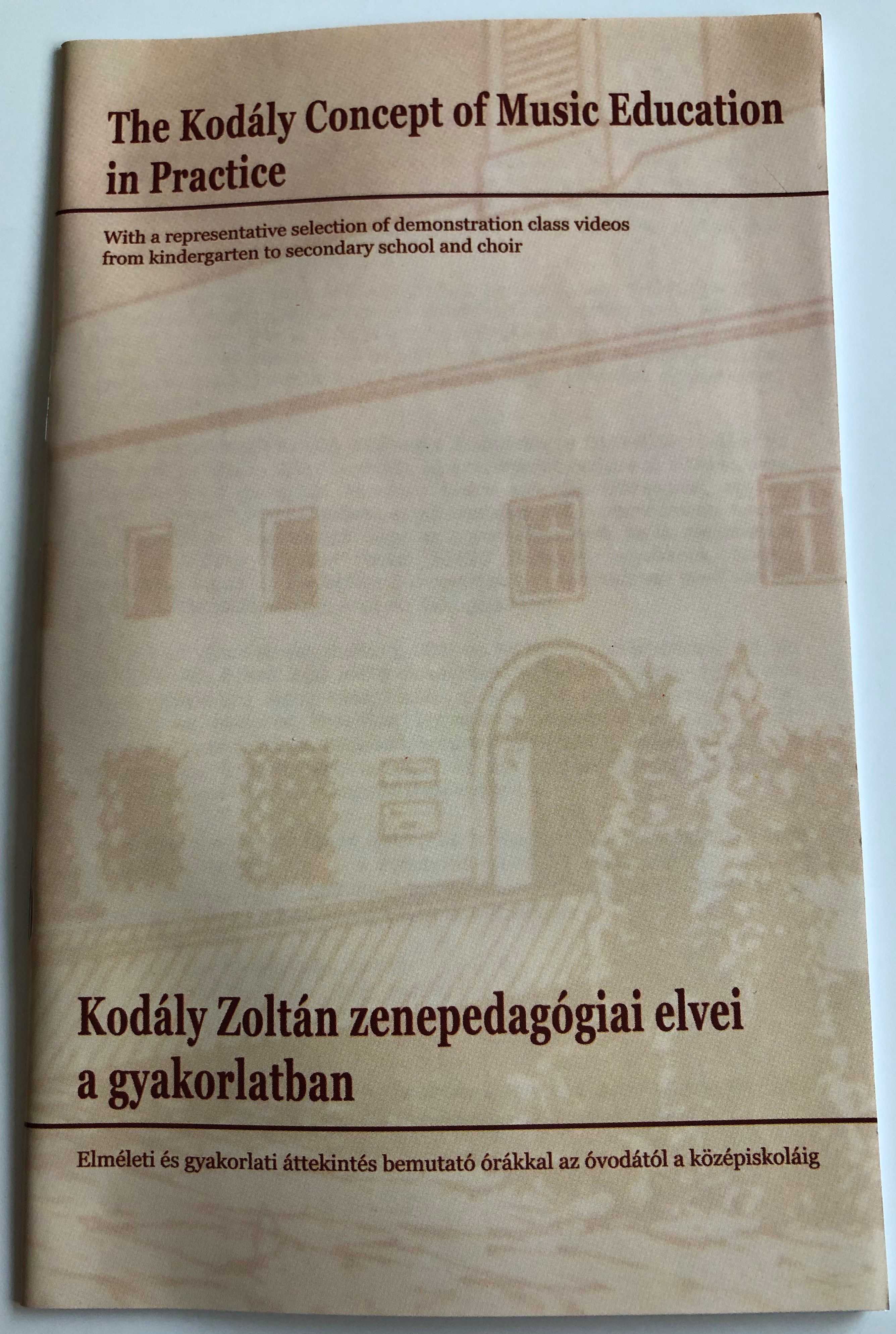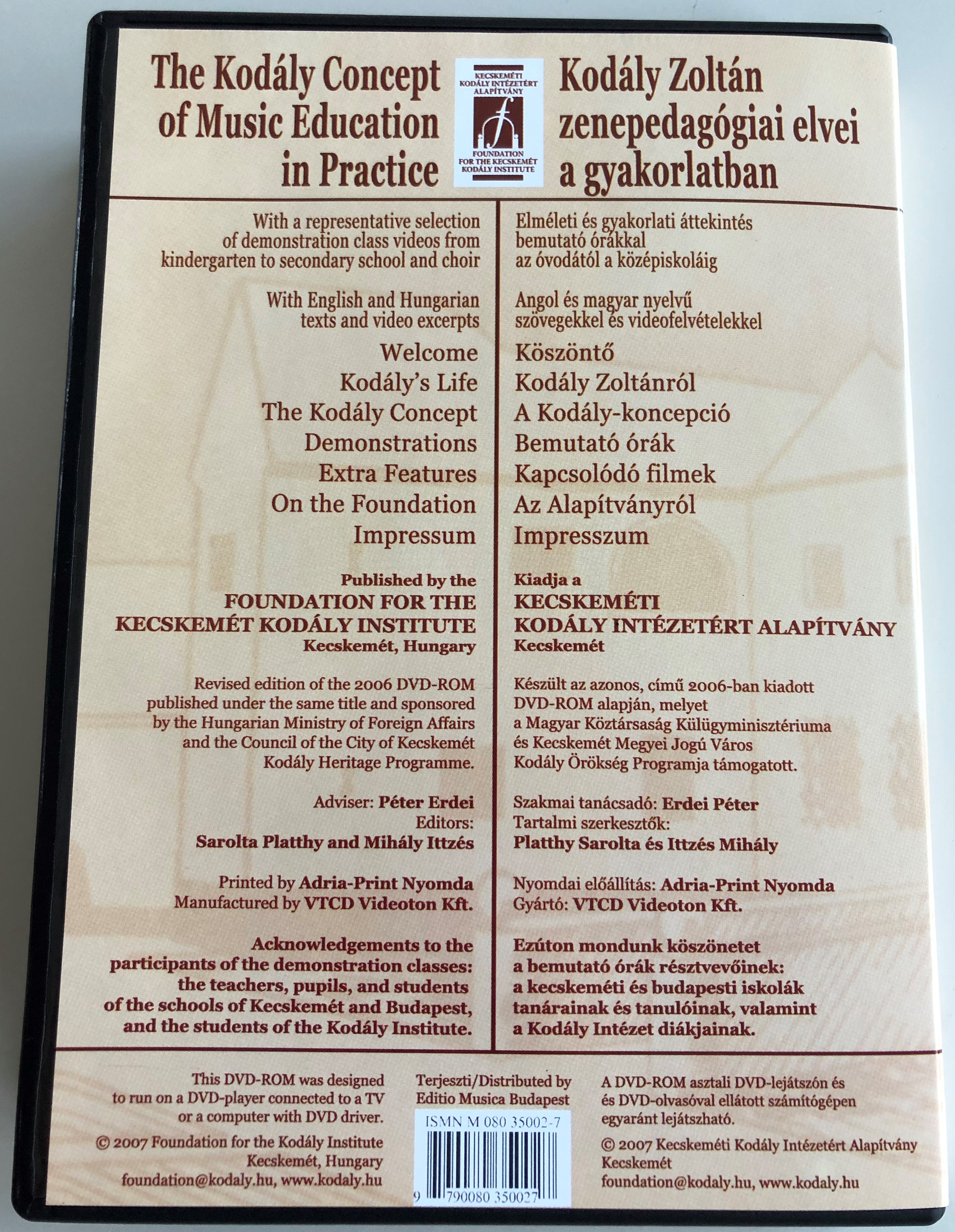Description
The Kodály Concept of Music Education in practice DVD ROM 2007 Kodály Zenepedagógiai elvei a gyakorlatban / Representative selection of demonstration class videos - from kindergarten to secondary school and choir
ISMN 9790080350027 / ASIN: B0018Q7K7Q
MADE IN HUNGARY
EDITIO MUSICA BUDAPEST
DVD-ROM
AUDIO: Hungarian
SUBTITLES: English
English Summary:
A representative selection of demonstration class videos from kindergarten to secondary school and choir. Includes sections on Kodaly's life, the Kodaly Concept and Demonstration Videos. With English and Hungarian texts and video excerpts.
Contents:
Welcome
Kodály's Life
The Kodaly Concept
Demonstrations
Extra Features
On the Foundation
Impressum
Hungarian Summary:
Elméleti és gyakorlati áttekintés bemutató órákkal az óvodától a középiskoláig. Kiadta a Kecskeméti Kodály Intézet (kétnyelvű, magyar-angol).
Tartalom:
Köszöntő
Kodály Zoltánról
A Kodály-koncepció
Bemutató órák
Kapcsolódó filmek
Az Alapítványról
Ímpresszum —
Publisher / Kiadja a KECSKEMÉTI KODÁLY INTÉZETÉRT ALAPÍTVÁNY
Kecskemét
Készült az azonos, című 2006-ban kiadott DVD-ROM alapján, melyet a Magyar Köztársaság Külügyminisztériuma és Kecskemét Megyei Jogú Város Kodály Örökség Programja támogatott.
Adviser / Szakmai tanácsadó: Erdei Péter
Editors / Tartalmi szerkesztők:
Platthy Sarolta és Ittzés Mihály
Nyomdai előállítás: Adria-Print Nyomda
Gyártó: VTCD Videoton Kft.
A lemezen Kodály Zoltán életéről és zenepedagógiai koncepciójáról szóló szöveges ismertetők mellett a koncepció gyakorlati alkalmazását (módszer) tekinthetjük meg zenei példákkal, órarészletekkel (módszertani útmutatás) az alábbi felosztásban, zenei és / vagy normál iskolákban:
- óvoda
- alsó tagozat: 3. és 4. osztály
- felső tagozat: 5., 7. és 8. osztály
- . középiskola: 10. osztály
The Kodaly Concept of Music Education in Practice Editio Musica Budapest DVD.
A representative selection of demonstration class videos from kindergarten to secondary school and choir.
Includes sections on Kodaly's life, the Kodaly Concept and Demonstration Videos, English and Hungarian texts and video excerpts.
This is a revised edition of the 2006 DVD-ROM published under the same title and sponsored by the Hungarian Ministry of Foreign Affairs and the Council of the City of Kecskemet Kodaly Heritage Programme.
There are 9 excerpts from demonstration classess representing the teaching process according to the Kodaly Concept as it is realized in Hungarian primary and secondary schools with a special music curriculum.
For each demonstration topic, a methodology class from the Institute is shown (English is spoken) and then a primary or secondary class is shown (Hungarian is spoken).
The children's grade level shown are noted below.
Contents:
The importance of using musical mother tongue;
(Kindergarten) Usage of hand signs;
(grade 3) Developing musical reading and writing skills, (grade 4) Developing polyphonic skills;
(grade 4) Developing improvisation skills;
(grade 5) Stylistic features of the Renasissance;
(grade 5) Stylistic features of Baroque music;
(grade 7) Introducing and practicing rhythmical asymmetry;
(grade 8) Teaching harmonic elements of the Viennese classical style;
(grade 10) Video of a methodology class at the Institute Video of a performance of Tricinia No. 5 Video of a performance of Kodaly's Dancing Song Video on the Foundation for the Kecskemet Kodaly Institute
Zoltán Kodály (/ˈkoʊdaɪ/; Hungarian: Kodály Zoltán, pronounced [ˈkodaːj ˈzoltaːn]; 16 December 1882 – 6 March 1967) was a Hungarian composer, ethnomusicologist, pedagogue, linguist, and philosopher. He is well known internationally as the creator of the Kodály Method.
Throughout his adult life, Kodály was very interested in the problems of many types of music education, and he wrote a large amount of material on teaching methods as well as composing plenty of music intended for children's use. Beginning in 1935, along with his colleague Jenő Ádám (14 years his junior), he embarked on a long-term project to reform music teaching in Hungary's lower and middle schools. His work resulted in the publication of several highly influential books.
The Hungarian music education program that developed in the 1940s became the basis for what is called the "Kodály Method". While Kodály himself did not write down a comprehensive method, he did establish a set of principles to follow in music education, and these principles were widely taken up by pedagogues (above all in Hungary, but also in many other countries) after World War II. See also: Kodály Hand Signs.
In the motion picture Close Encounters of the Third Kind, a visual learning aid distributed to members of a conference of ufologists was named the "Kodály Method" and referenced musical notes as hand signals.
Kodály Zoltán, teljes nevén Kodály Zoltán Vilmos (Kecskemét, 1882. december 16. – Budapest, 1967. március 6.) háromszoros Kossuth-díjas magyar zeneszerző, zenetudós, zeneoktató, népzenekutató, az MTA tagja, majd elnöke 1946-tól 1949-ig.
Kodály Zoltán zenei nevelési koncepciója ma a magyar zenei köznevelés alapját jelenti, jelentős szerepe van a szakoktatásban is. Ezek az alapelvek fokozatosan alakultak ki, fogalmazódtak meg és mentek át a gyakorlatba, azután, hogy a zeneszerző figyelme 1925 táján a zenepedagógia felé fordult.
Elgondolása szerint a jó zenész kellékei négy pontban foglalhatók össze: 1. kiművelt hallás, 2. kiművelt értelem, 3. kiművelt szív, 4. kiművelt kéz. Mind a négynek párhuzamosan kell fejlődnie, állandó egyensúlyban. Mihelyt egyik elmarad vagy előreszalad, baj van. … Az első két pontra a szolfézs és a vele kapcsolt, összefonódott összhangzattan és formatan tanít. Szükséges kiegészítés: mennél sokoldalúbb gyakorlati zenei tevékenység: kamarazene, karéneklés nélkül senkiből sem lesz jó zenész.

